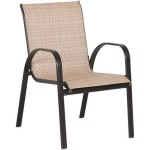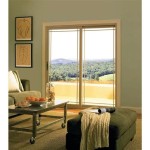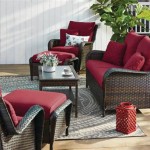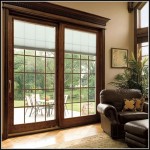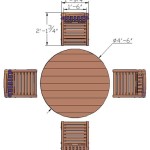Backyard Patio Designs With Fire Pit: A Comprehensive Guide
A backyard patio serves as an extension of the home, providing a space for relaxation, entertainment, and connection with the outdoors. Integrating a fire pit into the patio design elevates the ambiance, adding warmth, visual appeal, and functionality. The consideration of various design elements is crucial for creating a cohesive and enjoyable outdoor living space.
This article explores various aspects of backyard patio designs incorporating fire pits, encompassing style considerations, material selection, safety measures, and practical implementation tips. The aim is to provide a comprehensive overview to guide homeowners in creating a functional and aesthetically pleasing outdoor environment.
Key Considerations for Fire Pit Placement and Safety
The placement of a fire pit within a backyard patio design is paramount, influencing both safety and functionality. Careful consideration must be given to proximity to structures, vegetation, and prevailing wind direction. Local regulations and building codes often dictate minimum clearance requirements for fire pits, which must be strictly adhered to.
Specifically, fire pits should be situated at least 10 feet away from any building, overhanging branches, or flammable materials. This distance minimizes the risk of accidental ignition of surrounding structures or vegetation due to sparks or radiant heat. The prevailing wind direction should also be considered to prevent smoke from blowing directly into the house or neighboring properties.
The type of fire pit also influences placement considerations. Wood-burning fire pits generally require more clearance due to the potential for flying embers. Gas-fueled fire pits, while cleaner burning, still necessitate adequate ventilation and clearance from combustible materials. Professional installation is recommended for gas fire pits to ensure proper connection and safe operation.
Furthermore, the surface beneath and surrounding the fire pit should be non-combustible. Common materials include concrete, brick, pavers, or gravel. A designated fire pit area can be defined with a raised border or contrasting material to clearly demarcate the space and prevent accidental foot traffic through the fire zone. Regular maintenance, including clearing away debris and trimming surrounding vegetation, is essential for maintaining a safe environment.
Material Selection for Patio and Fire Pit Construction
The selection of materials for both the patio surface and the fire pit itself is a critical aspect of the overall design. The materials should be durable, weather-resistant, and aesthetically complementary. The chosen materials influence the longevity, maintenance requirements, and the overall visual appeal of the outdoor space.
For patio surfaces, popular choices include concrete, pavers, natural stone, and brick. Concrete is a versatile and cost-effective option, offering various finishes and colors. Pavers provide design flexibility and can be arranged in a wide range of patterns. Natural stone, such as flagstone or bluestone, offers a rustic and elegant aesthetic. Brick provides a classic and durable option, often used in traditional patio designs.
For the fire pit itself, common materials include concrete, brick, stone, and metal. Concrete fire pits can be pre-cast or custom-built, offering design versatility. Brick fire pits provide a traditional and durable option, often complementing brick patio surfaces. Stone fire pits offer a natural and rustic aesthetic, using materials such as river rock or stacked stone. Metal fire pits, particularly those made of steel or copper, offer a modern and sleek look. The gauge of the metal is crucial, as thinner gauges are more susceptible to rust and damage from high heat.
The color palette of the materials should also be carefully considered. Neutral tones, such as grays, browns, and tans, provide a versatile backdrop that complements a wide range of landscaping and furniture styles. Contrasting colors can be used to create visual interest and define specific areas within the patio. For example, a dark paver border can accentuate a lighter concrete patio surface.
Furthermore, the texture of the materials should be considered. Rough-textured materials, such as natural stone, offer a rustic and tactile feel. Smooth-textured materials, such as polished concrete, provide a more modern and sleek aesthetic. The texture of the materials should complement the overall design style and provide a comfortable and safe surface for walking and sitting.
Integrating Design Styles and Functional Elements
Integrating the fire pit seamlessly into the overall backyard patio design requires careful consideration of design styles and functional elements. The design style should complement the architecture of the house and reflect the homeowner's personal preferences. Functional elements, such as seating, lighting, and landscaping, should be incorporated to create a comfortable and inviting outdoor space.
Various design styles can be adapted to incorporate a fire pit. A rustic design style often features natural materials, such as stone, wood, and gravel. A modern design style typically incorporates clean lines, geometric shapes, and minimalist furnishings. A traditional design style often features brick or stone surfaces, classic furniture, and symmetrical layouts. A Mediterranean design style incorporates warm colors, terracotta tiles, and lush landscaping.
Seating is a crucial functional element for any patio design. Built-in benches, freestanding chairs, and outdoor sofas can be arranged around the fire pit to create a comfortable and inviting gathering space. The seating should be durable, weather-resistant, and ergonomically designed for comfortable use. Consider using cushions and pillows in coordinating colors and patterns to add visual appeal and comfort.
Lighting plays a crucial role in creating ambiance and extending the use of the patio into the evening hours. String lights, pathway lights, and uplighting can be used to illuminate the patio and highlight specific features. Consider using dimmable lighting to adjust the ambiance to suit different occasions. Fire pit lighting can be incorporated by using LED lights installed around the perimeter of the fire pit, to enhance the fire element.
Landscaping can enhance the aesthetic appeal of the patio and provide privacy and shade. Trees, shrubs, and flowers can be planted around the perimeter of the patio to create a natural and inviting environment. Consider using drought-tolerant plants to minimize watering requirements. Integrate potted plants and planters to add pops of color and texture to the patio surface. Ensure that landscaping does not obstruct views or create safety hazards.
Additional functional elements can include an outdoor kitchen, a dining area, or a water feature. An outdoor kitchen can extend the cooking and entertaining space of the home. A dining area provides a space for outdoor meals and gatherings. A water feature, such as a fountain or a small pond, can add a calming and relaxing element to the patio.
Consider the overall flow of the patio design, ensuring that there is adequate space for movement and circulation. The patio should be easily accessible from the house and should connect seamlessly with other outdoor spaces, such as the garden or the swimming pool. Consider incorporating pathways and stepping stones to guide visitors through the outdoor space.
Ultimately, a successful backyard patio design with a fire pit requires a thoughtful blend of style, functionality, and safety. By carefully considering the placement of the fire pit, the selection of materials, and the integration of functional elements, homeowners can create an outdoor space that is both beautiful and practical.
Furthermore, regular maintenance is crucial for preserving the beauty and functionality of the patio. This includes cleaning the patio surface, trimming vegetation, and inspecting the fire pit for any signs of damage. Following these guidelines will ensure a long-lasting and enjoyable outdoor living space for years to come.
The integration of technology can also enhance the patio experience. Consider incorporating smart lighting systems, outdoor speakers, and Wi-Fi extenders to create a high-tech outdoor environment. Control these elements through a smartphone or tablet, allowing for customized settings and convenient operation.

395 Sq Ft Rectangle Patio Design With Circle Fire Pit Area Mypatiodesign Com

Diy Square Patio Design With Fire Pit Plan Mypatiodesign Com

60 Backyard And Patio Fire Pit Ideas Diffe Types With Photo Examples Landscaping Outdoor Designs

Outdoor Fire Pit Design Ideas Landscaping Network
Fire Pit Ideas For Any Budget

8 Backyard Fire Pit Landscaping Ideas Metrogreenscape

Best Fire Pit Ideas Heated Backyard Retreat Designs Natural Brick Stone Depot

50 Backyard Landscaping Ideas Tips And Inspiration For Front Backyards

Simple Outdoor Patio Design With Built In Fire Pit Able Plan Mypatiodesign Com

From Classic To Contemporary 40 Inspiring Brick Patio Ideas For Your Space Outdoor Designs Backyard Stone



